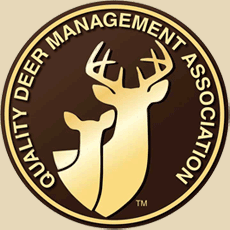Developing a Plan
You have bought your dream property now what? This question comes to the mind of thousands of individuals every year when they finally purchase their dream property. Whether it’s for hunting, recreational, retreat, or just for legacy, their property is perhaps their most valuable asset. Deciding how to manage it properly is a big decision and one that shouldn’t be considered lightly.
Where to start? Basically there are two places to start making your plan. First meet with your timber/land manager and discuss options for the property. Are there mature trees that can be harvested? Are there trees that can be thinned? Is there a good pond site? House site? Etc. Look at the property objectively and decide how you can maximize its full potential. We will look at this as a hunting property. That is, property that was purchased with the main intent being hunting. That being the case you will need to look at a road system, cleared areas for food plots, bedding cover, water sources, large mast producing trees (established oaks). What is currently there and what can you add or create.
After discussing this with your land manager, there is also the option of contacting your local NRCS agent (Natural Resources Conservation Service) This is a federal program administered by the Department of Agriculture. There are many programs within the NRCS that are designed to benefit and assist land owners to maximize their property for wildlife and natural resources. Every county in the country has a NRCS representative that will come to your property and meet with you and assist in developing a plan. Once this plan is developed you may qualify for cost share programs (The government pays a part and you pay a part) in developing a project at your location. Like all agencies these programs change annually so staying abreast of the program is important. Contacting your local representative at NRCS can get the ball rolling.
When I went through the process of developing a property plan, I engaged my land manger and NRCS and brought the two together. We looked at what was there and made short range (1-3 years) medium range (3-10 years) and long range (10+ years) plans for the property. This enabled us to devise a plan that was largely self-sustaining and mutually beneficial to me and the wildlife. Let’s face it, regardless how much we love to hunt, we are happier when our property isn’t a money pit, but at least pays for itself via tree harvest. When we can achieve all of our goals and the property be self-sustaining it is a win-win for everyone.
As we get into our planning, it’s very important to note that this step is crucial regardless of the size of your property. The small landowner needs it just as the large landowner. As we discuss this, the property I am using as my example piece is roughly 300 acres in the midlands of South Carolina. It consists of approximately 62 acres of mature hardwood drains. The remainder is in planted pines of various ages but all mature. The pines are in three age classes of 35 years, 30 years and 20 years.
Your plan needs to be very specific. General statements will get nothing accomplished. For example; in my plan we decided that we would clear-cut a 35 acre parcel this year, and replant it immediately. This would do two things, generate some cash for other items on the plan and create a bedding area that we desperately need. We are facing a monoculture – everything is the same and this is a big no-no for wildlife. We needed to diversify the topography. So the plan is a small clear-cut that will generate browse, bedding cover and planted pines for future harvest. Subsequent thinning and harvest of the remainder will follow in three to five year increments. This will create between six to seven age classes of forest maximizing the diversity of the available land.
There are many other elements to our plan that include plantings of fruit trees, food plots in the loading decks, spraying for invasive weeds and trees, prescribed burns to kill off the fuel on the forest floor, etc. The more detail the plan the better your land will be.
Lastly, your plan needs to be written down, and implemented. But the great part is that it is a living document, it can change as the needs and desires of the landowner change. But it gets you started and moving in a direction.




